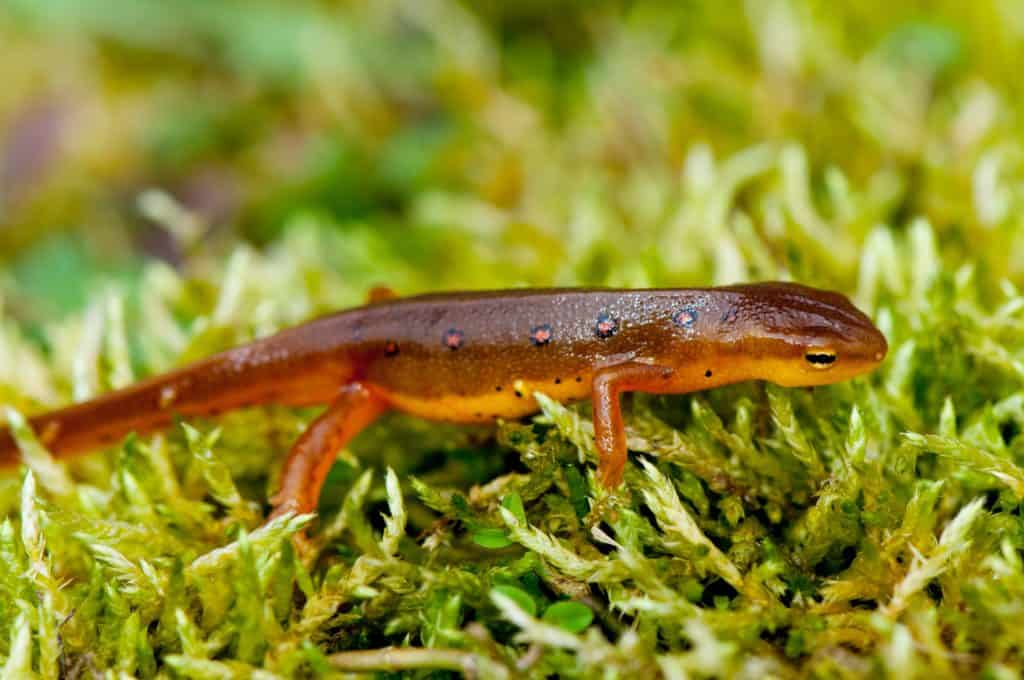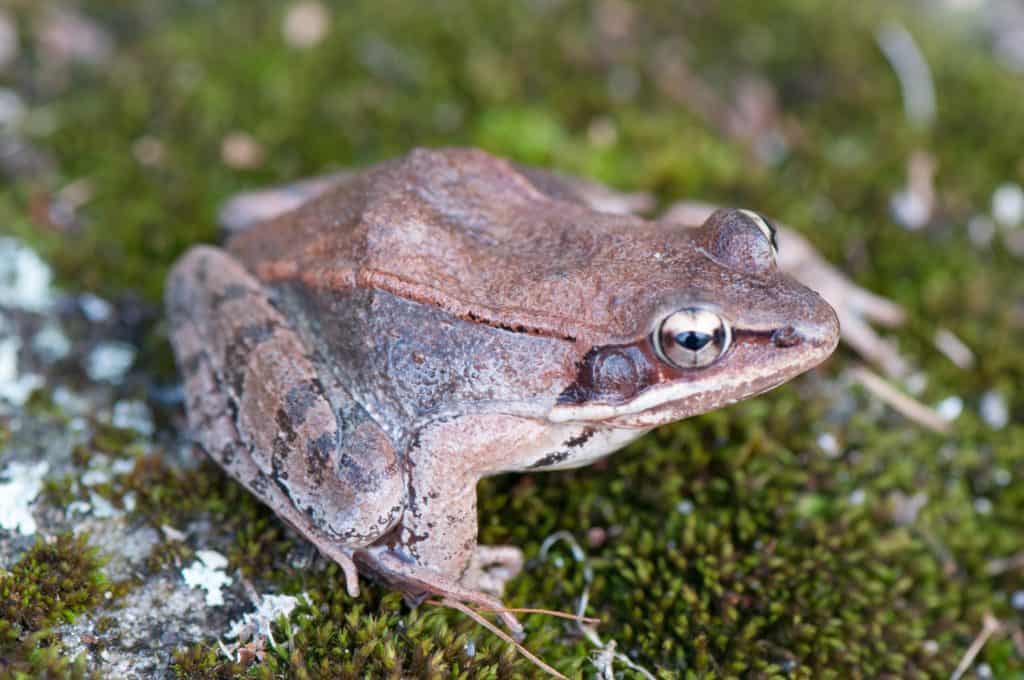
One of Vermont’s great wildlife migrations is happening right now, and it’s taking place right at our feet. Biologists call it “a big night” on cool, wet evenings in early spring when thousands of frogs and salamanders migrate from their woodland wintering areas to vernal pools, ponds and wetlands to breed.
Their travel often takes them across busy roadways where they can be killed by cars. Vermont Fish and Wildlife is asking drivers to slow down and be cautious when traveling at night in early spring or to take alternate routes to avoid driving near ponds and wetlands where salamanders and frogs are crossing during their breeding season.
“One of the benefits of checking out amphibian road crossings,” said Fish and Wildlife herpetologist Luke Groff, “is that you can see many individuals and species in a short period and small area, and some species may not be seen the rest of the year. The spotted and blue-spotted salamanders, for example, belong to a group called the ‘mole salamanders,’ because after breeding, they retreat underground or under logs or stumps, and are rarely seen until next spring.”
Road crossings are also a great way to see rare or otherwise hard-to-find species, which biologists rely on for data collection. For example, the four-toed salamander is rare in Vermont, and its distribution is not well understood. This information is used by Fish and Wildlife, the Agency of Transportation and other conservation partners to assess the need for wildlife passages and barriers in road construction plans that allow all wildlife, not just frogs and salamanders, to more safely cross roadways.
Groff is encouraging Vermonters to report amphibian road crossings. They can report them through the Vermont Reptile and Amphibian Atlas website at vtherpatlas.org.
Vermonters who wish to contribute to the Fish and Wildlife Department’s work to help frogs and salamanders can donate to the Nongame Wildlife Fund on their state income tax form or directly at vtfishandwildlife.com.





